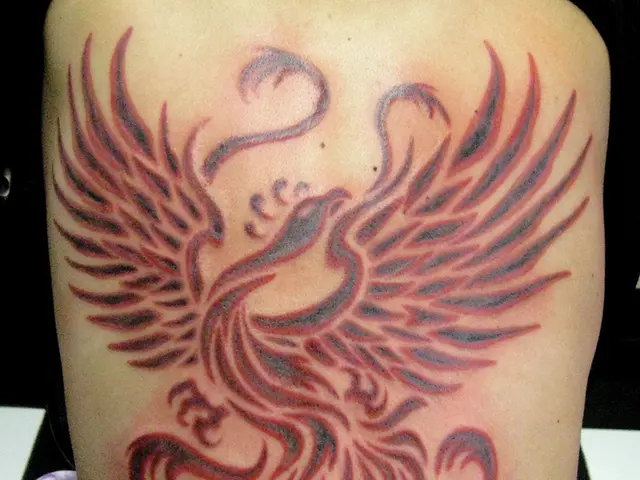Rapid and severe rosacea flare-up: Understanding causes, signs, and remedies
Rosacea Fulminans: A Severe and Uncommon Skin Inflammation Condition
Rosacea Fulminans is a rare and acute skin condition, characterized by sudden onset and intense symptoms. Primarily affecting the central region of the face - including the chin, cheeks, and nose - it manifests as inflamed, painful, andmerged pustules, nodules, and papules. These symptoms differ from those of standard rosacea or acne, presenting in a more aggressive and rapid manner.
Often referred to as Pyoderma Faciale, this condition predominantly impacts females of childbearing age, although the root cause remains elusive. Some research suggests a potential connection with inflammatory bowel disease and pregnancy, while previous instances may be more likely in people with a history of rosacea.
Common triggers for rosacea Fulminans include emotional stress, hormonal fluctuations, and certain medications. According to recent studies, specific dietary factors may also provoke or worsen symptoms, although this information applies to all rosacea cases.
Potential dietary triggers include:
- Spicy or Hot Foods: These may lead to flushing and worsen symptoms in some individuals.
- Dairy Products: Dairy, particularly high in histamine, can exacerbate rosacea in certain people.
- Foods with Histamine: Fermented cheeses, wine, and specific fish types can boost histamine levels, potentially worsening roosea.
- Caffeine: Caffeine doesn't directly cause triggers but can increase blood flow and potentially worsen flushing in certain individuals.
To combat rosacea Fulminans, oral isotretinoin (a prescription acne medication) and corticosteroids might be prescribed, with some cases benefiting from stress management and diet modifications. A 2016 case study also showed success when combining antibiotics with corticosteroids and lifestyle adjustments.
Healthcare professionals may advise making lifestyle changes such as:
- Reducing Stress: This can involve mindfulness meditation, deep breathing exercises, regular exercise, journaling, among other techniques.
- Making Dietary Changes: Cutting back on alcohol may be suggested.
- Using Gentle Skin Care Products: Selecting mild facial products can aid symptom management.
By combining these strategies with medical treatments, patients with rosacea Fulminans may see improved overall symptom management and quality of life.
Those experiencing symptoms like large, tender nodules, abscesses, significant facial discomfort, sudden onset, or persistent and worsening symptoms should consider consulting a dermatologist or healthcare professional. Seeking prompt medical attention can help swiftly address the condition, preventing complications such as scarring and infections, and addressing emotional distress that often arises from the condition.
Early engagement with a healthcare provider can ensure personalized care and manageable strategies tailored to a person's specific needs.
- Rosacea Fulminans, a severe and uncommon skin condition, requires prompt medical attention due to its potential for causing large, tender nodules, abscesses, significant facial discomfort, sudden onset, or persistent and worsening symptoms.
- In dermatology, the science of skin health, certain dietary factors have been identified as potential triggers for rosacea Fulminans, such as spicy or hot foods, dairy products, foods with high histamine levels, and caffeine, which can exacerbate symptoms or worsen flushing in some individuals.
- Health-and-wellness practices, including stress management, diet modifications, and gentle skin care, can help combat rosacea Fulminans in conjunction with medical treatments such as oral isotretinoin and corticosteroids, as suggested by recent studies and case studies in medical-conditions literature.








